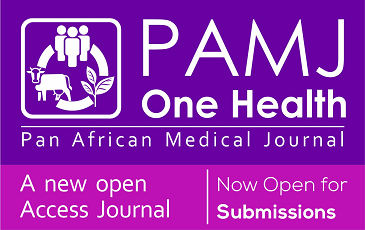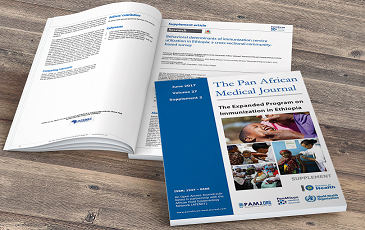Unilateral corporal penile fracture due to masturbation: a case report
Lukundo Siame, Malan Malumani, Elliakim Manda, Sydney Mulamfu, Mwaba Kopa, Michelo Haluuma Miyoba, Sepiso Kenias Masenga
Corresponding author: Sepiso Kenias Masenga, Mulungushi University, School of Medicine and Health Sciences, HAND Research Group, Livingstone, Zambia 
Received: 11 Feb 2025 - Accepted: 02 Mar 2025 - Published: 12 Mar 2025
Domain: General surgery
Keywords: Case report, penile fracture, management, sexual enhancer, masturbation
©Lukundo Siame et al. PAMJ Clinical Medicine (ISSN: 2707-2797). This is an Open Access article distributed under the terms of the Creative Commons Attribution International 4.0 License (https://creativecommons.org/licenses/by/4.0/), which permits unrestricted use, distribution, and reproduction in any medium, provided the original work is properly cited.
Cite this article: Lukundo Siame et al. Unilateral corporal penile fracture due to masturbation: a case report. PAMJ Clinical Medicine. 2025;17:23. [doi: 10.11604/pamj-cm.2025.17.23.46845]
Available online at: https://www.clinical-medicine.panafrican-med-journal.com//content/article/17/23/full
Unilateral corporal penile fracture due to masturbation: a case report
![]() Lukundo Siame1,2,
Lukundo Siame1,2, ![]() Malan Malumani1,2, Elliakim Manda3, Sydney Mulamfu1, Mwaba Kopa1,
Malan Malumani1,2, Elliakim Manda3, Sydney Mulamfu1, Mwaba Kopa1, ![]() Michelo Haluuma Miyoba1,2,
Michelo Haluuma Miyoba1,2, ![]() Sepiso Kenias Masenga1,2,&
Sepiso Kenias Masenga1,2,&
&Corresponding author
Penile fracture is a rare but serious condition caused by trauma to an erect penis, often underreported due to stigma and lack of awareness. This case involves a 21-year-old male, who sustained a unilateral corporal rupture during vigorous masturbation after consuming a locally available "power drink" believed to enhance sexual performance. He presented with severe penile pain, swelling, and a noticeable rightward bend, accompanied by a history of a distinct “pop” sound during the event. Physical examination revealed tenderness, bruising, and deformity, while sonography suggested a hematoma but was inconclusive for penile fracture. A clinical diagnosis led to immediate surgical intervention, including mid-shaft incision, shaft de-gloving, hematoma evacuation, and repair of the ruptured corporal cylinder. Postoperative care ensured a favorable outcome, with normal erectile function restored. This case highlights the importance of prompt diagnosis and intervention while advocating for awareness and destigmatization of penile fracture.
Penile fracture is a rare but serious injury [1]. It occurs due to forceful bending of the erect penis, resulting in a traumatic rupture of the tunica albuginea of the corpora cavernosa [2]. Incidence varies across different regions and populations with 1 case per 1,750,000 men in the United States of America [1]. The causes of penile fracture vary significantly depending on cultural norms and sexual practices [3]. In the Middle East and North Africa, the practice of "taghaandan" a type of masturbation involving the forcible bending of the penis to cause tumescence is a major contributing factor to penile fracture [4]. In contrast, in North America and Europe the most common cause is trauma sustained during sexual intercourse [5].
Clinically, patients typically present with a history of blunt trauma to an erect penis, followed immediately by a popping or snapping sound, intense pain, and rapid detumescence [6]. Physical examination often reveals visible swelling, bruising (ecchymosis), and a characteristic penile deformity known as an "eggplant deformity" [6]. Diagnosis typically relies on a combination of the patient's history and a thorough clinical examination, rarely requiring additional investigations, and the patient needs immediate surgical intervention [6]. The delay in seeking medical care among young men, particularly in developing countries, is often driven by embarrassment, fear, and social stigma. This hesitation can lead to complications such as erectile dysfunction and abnormal curvature [6]. We present a rare and underreported case of urological emergency from our region of a 21-year-old male patient who experienced unilateral corporal rupture fracture following vigorous masturbation from an episode of consuming a commercially available "power drink" before the incident, which is believed to contain a sexual enhancing chemical.
Patient information: we present a case involving a 21-year-old man, MN, who presented at the accident and emergency department of Livingstone University Hospital in Zambia's tourist capital city on the 26th of April 2019. He came in with a chief complaint of excruciating pain in the penis. The patient provided a detailed history, stating that before the presentation, he had consumed a local drink known as a 'power drink,' believed to contain a sexual enhancing chemical. Following this, he engaged in vigorous masturbation, exerting his body weight on his erect penis. This was accompanied by a 'pop' sound on the penile shaft, immediately followed by severe pain, loss of tumescence, and the rapid development of swelling. Initially warm, the swelling later cooled. The patient and collateral history denied any past medical history of mental illness.
Clinical findings: on physical examination, he presented with a swollen penile shaft exhibiting a noticeable bend to the right. The area was severely tender, and there was bruising on the right side. No blood was observed at the urethral meatus. His overall general examination was unremarkable.
Timeline of current episode: on April 26, 2019, the patient presented with excruciating penile pain following vigorous masturbation and consumption of a sexual enhancer drink. Firstly, physical examination and initial diagnosis were done. Secondly, diagnostic assessment and consultation with a sonographer were carried out. Thirdly, the patient was admitted to the surgical ward and was prepared for surgery, and finally, surgical intervention took place, and postoperative care was properly done. On May 1, 2019, the patient was discharged from the hospital. Follow-up: regular outpatient visits up to six weeks post-discharge.
Diagnostic assessment: ultrasound report showed a normal morphology of the corpora cavernous while the corpus spongiosum is thickened specially at the middle of shaft of the penis. A heterogeneous collection (2.4 x 1.4 cm) is seen in the corpus spongiosum. Doppler study shows the continuation of cavernosal arteries and normal flow in right and left cavernosal arteries measuring PSV 7.69 cm/sec and 9.3 cm/sec, respectively.
Diagnosis: based on the typical history and clinical examination, a clinical diagnosis of penile fracture was made, and the patient was immediately admitted to the surgical ward.
Therapeutic interventions: the only senior urologist in Livingstone and the southern province was consulted, who advised immediate exploration of the penile shaft for hematoma evacuation and repair of the torn corporal cylinder. Preoperatively, the patient was commenced on prophylactic antibiotic ceftriaxone 1g IV stat, Foley´s catheter was inserted, and intravenous fluids with normal saline for maintenance hydration and pethidine 50mg stat. During the surgery, which was performed by general surgeons in consultation with a urologist, a mid-shaft circumferential incision was made, and the shaft was de-gloved. The findings included a big hematoma, oedema and a tear in the tunica albuginea of the right corpus spongiosum (Figure 1). The hematoma was evacuated, washout with saline done, hemostasis achieved, and repair of the corporal cylinder with vicryl number 2/0 simple continuous suture (Figure 2). The fascia was repaired separately using vicryl 3/0 simple interrupted, and skin was closed with vicryl 2/0 simple interrupted. The wound was dressed and inspected after 24 hours and was uneventful (Figure 3). The patient was maintained on analgesics pethidine 100mg im QID, penile shaft elevation, and alternate day cleaning until discharge.
Follow-up and outcome of interventions: on day five, the patient was discharged, then he was followed up in the outpatient clinic up to 6 weeks after which he was discharged from the outpatient department on a satisfactory note.
Patient perspective: “I have had not lost my penile erection, and I am not experiencing any abnormal deviations when having tumescence”.
Informed consent: written and verbal consent was obtained from the patient.
Penile fracture is a relatively rare condition, with its incidence varying across regions and populations due to differences in cultural practices and sexual behaviors [1]. In Western countries, the most common cause is vigorous sexual intercourse, often associated with high-energy trauma and, in up to 38% of cases, urethral injuries [7]. Conversely, in the Eastern world, low-energy trauma predominates, typically resulting from attempts to manually detumesce an erect penis, which rarely involves urethral rupture [4]. Notably, in our setting, the epidemiology and the outcomes of penile fractures are not well documented, hence the need for further research on the regional patterns and associated factors. Accurate diagnosis of penile fracture is primarily clinical, based on the patient´s history and physical examination findings [6]. Key diagnostic features include a sudden cracking sound, severe pain, rapid swelling, and a characteristic penile deformity known as an “eggplant” [6]. Imaging modalities such as ultrasound or MRI, may be employed in equivocal cases to confirm the diagnosis or assess associated injuries [6]. However, in resource-limited settings, surgical exploration is often preferred when clinical suspicion is high, as reliance on advanced imaging may not be available and may delay intervention [6].
Management of penile fractures involves prompt surgical intervention, which has consistently demonstrated superior outcomes compared to conservative approaches [8]. Surgical repair minimizes the risks of long-term complications, restores erectile function, and ensures normal voiding [8]. In resource-constrained environments, the decision to operate is guided by clinical presentation rather than reliance on advanced diagnostic tools [8]. Preoperative and postoperative antibiotics tailored to local bacterial profiles are critical for infection prevention [8]. A standardized surgical protocol, regardless of presentation delay, is recommended to optimize outcomes [8]. Outcomes following surgical repair are generally favorable, with most patients achieving full recovery of erectile function and minimal complications [8]. In the presented case, the absence of urethral injury and adherence to evidence-based perioperative care, including meticulous wound inspection, antibiotic administration, and strict abstinence from sexual activity during the recovery period, contributed to successful healing. This case highlights the importance of timely intervention, meticulous surgical care, and patient education to prevent complications and ensure optimal functional recovery.
This case shows the successful management of a clinically diagnosed penile fracture through prompt penile fracture intervention in a resource-limited setting, highlighting that without advanced imaging, surgical technique combined with evidence-based perioperative care, ensures favorable outcomes and minimizes complications such as erectile dysfunction and penile deformity. Timely clinical diagnosis and surgical repair remain paramount, even in resource constraints, to prevent long-term sequelae and restore patient function.
The authors declare no competing interests.
Michelo Haluuma Miyoba and Elliakim Manda were responsible for patient management. Data collection was conducted by Sydney Mulamfu, Malan Malumani, and Mwaba Kopa. The manuscript was drafted by Lukundo Siame and Sepiso Kenias Masenga, with revisions made by Michelo Haluuma Miyoba, Malan Malumani, and Sepiso Kenias Masenga. All authors reviewed and approved the final version of the manuscript.
We are grateful to the patient who gave consent to write a report about his injury and use the pictures of his injured organ in the report. We are grateful to the hospital management for the permission to take pictures in the operating theater.
Figure 1: intraoperative image of the injured penis showing a torn right corpus cavernosum on the lateral aspect after surgically opening the overlying skin and fascia
Figure 2: post-repair image of the penis showing the sutured surgical wound after repair of the corporal cylinder
Figure 3: postoperative image of the penis with a wound dressing applied after surgical intervention
- Amer T, Wilson R, Chlosta P, AlBuheissi S, Qazi H, Fraser M et al. Penile Fracture: A Meta-Analysis. Urol Int. 2016;96(3):315-329. PubMed | Google Scholar
- Sökmen D, Çömez YI. Bilateral Corpus Cavernosum and Complete Urethral Rupture: A Double Trouble. Cureus. 2021 Jun 6;13(6):e15481. PubMed | Google Scholar
- Ouattara A, Paré A-K, Konaté M, Yé D, Simporé M, Kirakoya B et al. Penile fracture in burkina faso: our experience on the management of 21 cases. Afr J Urol. 2023;29(1):38. Google Scholar
- Ory J, Bailly G. Management of penile fracture. Can Urol Assoc J. 2019 Jun;13(6 Suppl4):S72-S74. PubMed | Google Scholar
- Majzoub AA, Canguven O, Raidh TA. Alteration in the etiology of penile fracture in the Middle East and Central Asia regions in the last decade; a literature review. Urol Ann. 2015;7(3):284-288. PubMed | Google Scholar
- Imran M, Kamran A, Tanveer A, Farho MA. Penile fracture: A case report. Int J Surg Case Rep. 2023;110:108749. PubMed | Google Scholar
- Eke N. Fracture of the penis. Br J Surg. 2002;89(5):555-565. PubMed | Google Scholar
- Hardesty J, Burns RT, Soyster ME, Mellon M, Bernie HL. A review of the literature and proposed algorithm for penile fracture management. Sex Med Rev. 2023;12(1):100-105. PubMed | Google Scholar








